News
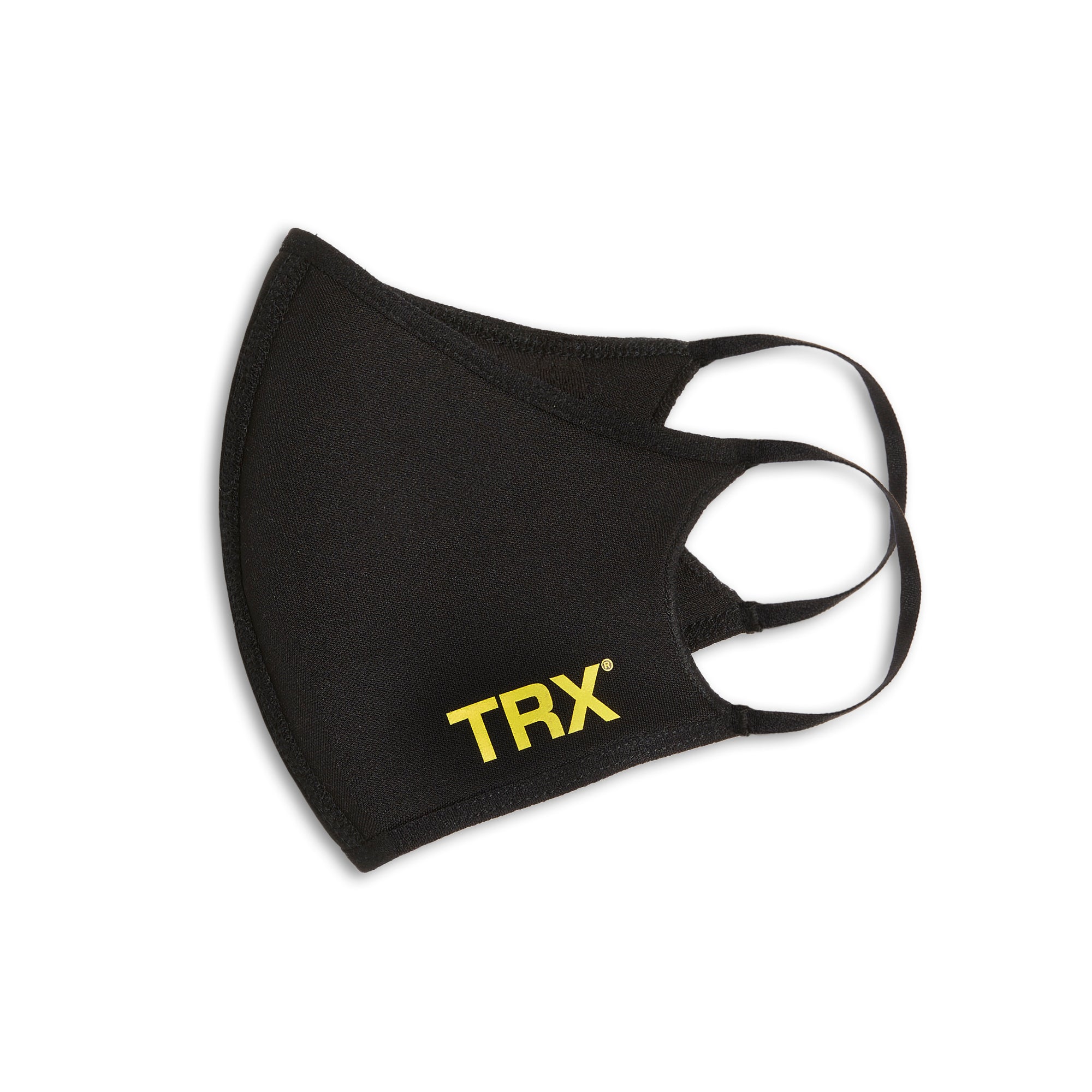
JUST IN: NEW TRX® GEAR
TRX Training
hr class="blog-card__divider">
With spring right around the corner, we’re all looking for ways to hit refresh on our workouts. What better way to boost your motivation than a line of fresh new gear to round out your TRX® Suspension Training method and setup? We curated this line to focus on what everyone’s been asking for—COVID safety options, easy setup, and a new, improved mat made to handle your highest intensity workouts.
TRX Fac
We offered this as a limited-edition gift but we brought it back for the long haul. Now you can sweat without worry thanks to our soft, stay-put face mask featuring a breathable performance fabric.
TRX High-Impact Mat
The foundation of every workout. Our plush, non-slip mat is not only the optimal thickness for cushioning high-impact moves, it features handy lines on the surface to better gauge where you should be when performing Suspension Trainer™ moves.
TRX Door Hinge Mount
Want an option other than your door or drilling into your walls? Our new TRX Door Hinge Mount rests perfectly in most door hinges—just pop out the hinge pin and slip in the anchor to give yourself the perfect place to attach your TRX® Suspension Trainer™. Best part? It’s so low-profile it can stay there forever.
Stay on the lookout for more gear down the road! But in the meantime, put your new gear to good use with our TRX On-Demand workouts. P.S. Expect really cool updates (coming soon).

Injury rehab with TRX
Build’em up with the TRX
The TRX can play a pivotal role for newer clients lacking strength and athletes coming back from injury. Want to find the right progression path for your fitness level? Take our quick assessment quiz to get a personalized training plan that builds confidence and strength gradually. With the TRX Suspension Trainer, you're able to un-load certain exercises, which allows the client/athlete to progress gradually. Doing so builds strength and confidence in the process.
TAKE OUR TRAINING QUIZ
I've often found my new clients to be:
1. Afraid of the gym
2. Out of shape and weak
3. Lacking confidence
The last thing these clients need is a personal trainer throwing weight on their back and setting them up to fail. If they aren’t physically or mentally ready for certain exercises, that’s ok! Simply scale it down and build them up. I love showing my newer clients how much fun training can be with the right exercises performed at an appropriate level of difficulty. The following is a list of my top TRX “Building Block” exercises I like to incorporate with my new clients:
1. TRX Low Row 3-4 reps x 10 sets
2. TRX Squat 3-4 reps x 10 sets
3. TRX Elevated Step-Up 3-4 reps x10 sets
4. TRX Chest Press 3-4 reps x 10 sets
5. TRX Side Lunge 3-4 reps x 10 sets
6. TRX Y-Fly 3-4 reps x 10 sets
Staying in the 3-4 reps of 10 sets range ensures a good amount of volume, which will give your clients plenty of practice with the exercise. The more sets your client completes, the stronger they’ll become. And with improved strength, you will notice a distinct increase in confidence. As their strength and confidence grows, your clients will start to view the gym as a place where goals can be accomplished, rather than a place where failure is inevitable.
Similar to working with new clients, injured athletes need positive reinforcement by experiencing success in the weight room. This is possible by progressing gradually and using the TRX to un-load specific exercises. I like to incorporate isometric and eccentric principles in these exercises to expedite strength levels and body awareness. This is a list of my TRX “Back at It” exercises:
1. TRX Squat and TRX Single Leg Squat with a 5-0-1 eccentric tempo (5 seconds on the descent, 0 sec hold, and 1 second return to start position), progress to wearing a weight vest 3 reps x 5 sets
2. TRX Squat Jumps with Isometric 2 count hold upon landing 3 reps x 5 sets
3. TRX Speed Skaters with Isometric 2 count hold upon landing 3 reps x 5 sets
4. TRX Low Row with Isometric 2 count hold at contraction point, progress to wearing a weight vest 3 reps x 5 sets
5. TRX Step-ups with a 1-0-5 eccentric tempo, progress to wearing a weight vest 3 reps x 5 sets
6. TRX Seated Pull-Up with Isometric 2 count hold at contraction point, progress to wearing a weight vest 3 reps x 5 sets
We want to keep the volume on the lower end of the spectrum here since the exercises are using eccentric and isometric principles which will be more demanding on the athlete’s body. As the athlete becomes stronger and more confident with these exercises, you can then adjust the sets and reps, thereby increasing the overall volume.
My intention for these exercises is to help build up your athletes and clients, as well as put a smile on their face for the fun workout you just put them through!
About Coach Thom -
Scott Thom recently completed his second season with the Washington State University men’s basketball program as the team’s strength and conditioning coach/player development. He served in the same capacity at California the previous four years. Prior to joining the staff at California, Scott coached basketball and taught physical education for seven years at Vintage High School in Napa, Calif. Scott received his bachelor’s degree in physical education from Chico State in 2002, a teaching credential in physical education from Sonoma State, and a masters in Coaching and Athletic Administration from Concordia University. He is certified through both CSCS and USAW. Scott writes articles for STACK and Harbinger Fitness.
Instagram Account- @CoachScottThom
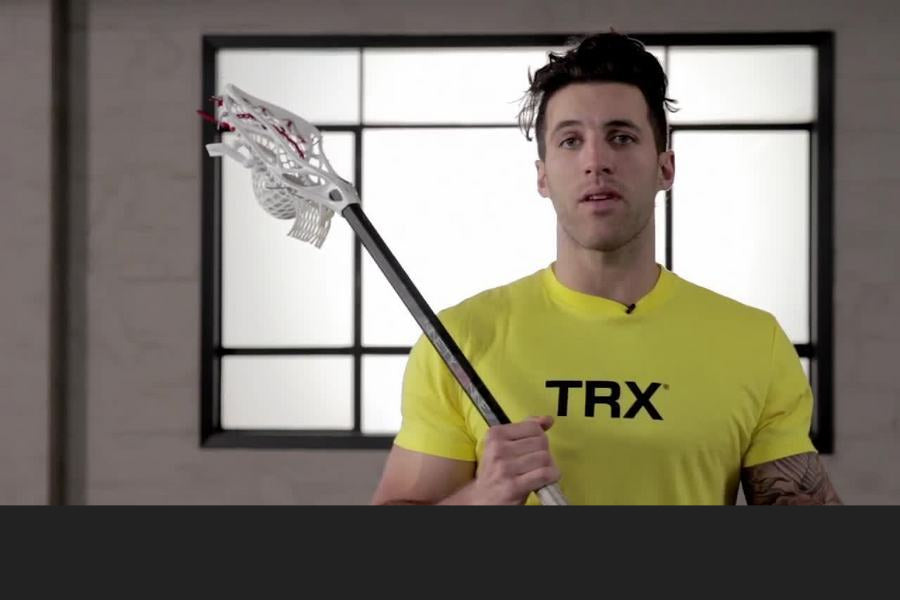
Improve Your Lacrosse Shot with Paul Rabil and TRX
While most runners are focused on fast intervals, hill repeats and getting their long runs in, there is an often overlooked but crucial training element to consider. This element is one of the best ways to get faster with minimal effort, yet most runners view it as an afterthought. Yes, as the title suggests, I’m talking about flexibility. Now, most runners are at this moment, rolling their eyes and thinking, “Yup, I’ve heard this one before” but before you click out, take a moment to consider the following:
Stride Frequency
Stride Length
Everything we do technically and aerobically directly affects these variables and ultimately influences the all important equation below:
Stride Frequency x Stride Length = SPEED!!!
What you might not realize is just how much increased flexibility can influence these variables. Now we know that the ideal stride frequency for most runners is about three foot strikes per second (or 90 rpm). If this sounds fast to you, then this is the first thing you will need to work on. Once you have created the neuromuscular ability to hold this turnover, it will be time to take a good hard look at stride length.
So how big of a difference will these elements make? Have a look at the following two examples:
Example #1
3 foot strikes per second (90 rpm) and a stride length of just under 55” gets you a 40 min 10 k
2” more per stride and that 10 k time drops to 38:30!!
Example #2
A stride length of 51.5” with a turnover of 85 rpm (2.83 foot strikes per second) gets you a 45 min 10k
Moving up to 90 rpm (0.17 more foot strikes per second) shaves 2.5 minutes off your time!!
These are BIG DIFFERENCES!!
So how does flexibility help? Let’s have a look at stride frequency.
If you look at the photo below of Kenesa Bekele, take note of how much quadriceps mobility he demonstrates as he pulls his left heel under his body. This allows him to create a shorter lever in his leg so that he can pull it forward faster, which gives him an effortless and more efficient turnover.
Stride length is of equal importance. Hip and calf mobility directly influence stride length. If either are tight, they will inhibit the movement and shorten stride length. This means that if we can just get these tight structures out of the way of the motion, it is very likely that we have some “free speed” waiting for us on the other side that our present conditioning level will support.
There are some great stretches to address these specific issues in the TRX Essentials: Flexibility DVD, and the entire thing also works very well for addressing many of the imbalances that can lead to injuries in runners. The DVD offers a tremendous full body stretch that also can be done as a flowing movement prep for any athletic activity.
Beyond what is in the DVD, three additional stretches that work perfectly for runners are featured below. Try these out prior to your next run, and see if your running stride feels a bit easier.
1) TRX Kneeling Quad StretchThis is an amazing exercise to help create mobility through the entire anterior line and increase stride length.
2) TRX Pigeon PoseA fantastic stretch that addresses the glute and piriformis and provides a stretch across the thoracolumbar fascia into the contralateral lat. This stretch serves to alleviate the tightness that often develops along this line and helps to prevent injury and promote smooth and obstruction free running, which promotes increased stride frequency.
3) TRX Sprinter Start Calf StretchThis stretch addresses the classic mobility problem of inadequate ankle dorsiflexion in runners that often results in a pre-mature heel lift, added stress on the calf and plantar fascia and can shorten the stride.
For a complete flexibility program to add to your training regimen, check out the TRX Essentials: Flexibility DVD.
Good luck with your race season and may a PR await you at your next finish line!
Fraser Quelch is Director of Programming and Education for TRX. He is also a featured fitness author and a competitive ironman triathlete.

Improve Performance Through Multi-Planar Training
While this program seems well-put together at first glance
Since the beginning of the modern era of physical training, the accepted thought process on program organization has been a body part approach where the body is divided into its major muscle groups and trained accordingly I E. chest back legs shoulders etc. This arrangement has been an easy, understandable way to segment programs and hasbrought good results, especially when applied towards a bodybuilding style program.
But has this organizational strategy come with the cost? Consider thefollowing:
The human body works to produce movement... period.To this end it makes every attempt to use many muscles in concert to create action as efficiently and effectively as possible.
Life demands that we are able move freely through space and not within the confines of a machine or other restrictive motor pattern. To this point, isolated exercises contradict the nature of how the body has evolved to move.
Most traditional strengthening programs heavily favor sagittal plane movement. This is a training environment that promotes one dimensional motor patterns, an inability to move effectively in any given direction, and in many cases joint dysfunction.
Muscle based programs in many cases, unwittingly contribute to muscle imbalances, poorly developed firing patterns, and general movement deficiency in the untrained planes.
Imagine for a moment that there are no individual muscles. No simple groups to target. What if all we had to work with were our various joints and the movements that they are capable of? Want to explore training based on movement patterns rather than isolated muscles? Take our quick assessment quiz to get a personalized plan that focuses on functional, multi-planar exercises. Letting go of our traditional muscle-based approach to strength training and understanding how the body actually moves are the first steps to integrating a planar training approach to program design.
TAKE OUR TRAINING QUIZ
The central nervous system (CNS) coordinates the muscles in concert to produce specific movements. It does this by using something called motor engrams. These are movement programs that we have developed for all general actions. Familiar movements build detail ontothese programs, creating highly developed and refined motor engrams. These well-practiced programs run smoothly at many different speeds and can be executed successfully in changing environments (i.e. off balance, rushed, or form an unusual position).
Unfamiliar movements have incomplete or rough engrams. These programs are a work in progress and can often go awry. We have to slow down and be very cognitive about the action in order to control it properly and we tend to be much less successful. These unpracticed actions often feel "uncoordinated" and in the event that a situation demands that we run an unfamiliar program at higher speed, the chances of failure of injury increase dramatically.
Training using a movement or planar approach results in a complete workout that not only will involve every muscle group around the major joints (the goal of those looking for aesthetics), but will also work though every motor plane, giving balanced training that will help to improve many of our traditionally rough movement patterns, increase overall function and reduce the chance of injury. Integrating more complex and coordinative multi-planar movements into the program will build further on this new foundation to stimulate the CNS to create and refine motor engrams that will then be applied to sport and life.
Let's go back and review the planes of motion. These elements are often the first things taught in basic fitness courses but sadly are promptly forgotten as there was no emphasis placed on applying them. As the body moves through space, it uses any combination of three planes of motion. These are as follows.
Sagittal Plane of Motion:
Movement forward and back, or through the mid-line of the body. An example of sagittal plane movement is a biceps curl or a step forward lunge.
Frontal Plane of Motion:
Movement side to side or along the frontal plane, such as abduction and adduction. Exercises that work through the frontal plane are the dumbbell lateral raise or side lunge.
Transverse plane of Motion:
Movements that include horizontal abduction or adduction or rotational actions. Examples here are the bench press or a cable wood chop.
Below is an example of a traditional, full body strength training program that is representative of the industry standard. It is comprised of 22 exercises (5 for legs, 3 for chest, 3 for back, 3 for shoulders, 2 for biceps, 2 for triceps and 4 for the core). It could be divided up by muscle group over a two or three day period. The point is to evaluate the exercise selection. View the program while considering only the first two columns.
Traditional
"Body Part" Based Training Program
MuscleGroup
Exercise
PrimaryJoint(s)
MovementPlane(s)
Legs
Squats
Hip, Knee & Spine
Sagittal
Legs
Lunges
Hip & Knee
Sagittal
Quadriceps
Leg Extension
Knee
Sagittal
Hamstrings
Leg Curl
Knee
Sagittal
Calves
Standing Calf Raise
Ankle
Sagittal
Chest
Bench Press
Shoulder & Elbow
Transverse
Chest
Incline Dumbbell Press
Shoulder & Elbow
Transverse
Chest
Dumbbell Flies
Shoulder
Transverse
Back
Close Grip Pull Up
Shoulder & Elbow
Sagittal
Back
Seated High Row
Shoulder & Elbow
Transverse
Back
Bent Dumbbell Row
Shoulder & Elbow
Sagittal
Shoulders
Military Press
Shoulder & Elbow
Frontal
Shoulders
Lateral Dumbbell Raise
Shoulder
Frontal
Shoulders
Front Dumbbell Raise
Shoulder
Sagittal
Biceps
Dumbbell Curl
Elbow
Sagittal
Biceps
Preacher Curl
Elbow
Sagittal
Triceps
Lying Triceps Extension
Elbow
Sagittal
Triceps
Cable Press Down
Elbow
Sagittal
Core
Stability Ball Crunch
Spine
Sagittal
Core
Oblique Crunch
Spine
Transverse
Core
Leg Raise
Spine
Sagittal
Core
Chest Raise
Spine
Sagittal
On the surface it appears to be well-balanced and would result in good aesthetic results. Now take into consideration the last 2 columns of information. The key stats are as follows:
Hip is primarily involved in only 2 of 22 exercises
Shoulder is primarily involved in 9 of 22 exercises
Spine is primarily involved in only 5 of 23 exercises
Elbow is primarily involved in 9 of 23 exercises more than the Hip and theSpine combined
15 (68%) occur in the sagittal plane
2 (9%) occur in the frontal plane, both at the shoulder joint.
5 (23%) occur in the transverse plane, but the majority of these were also at
the shoulder and none at the hip.
While this program seems well-put together at first glance, the glaring imbalances are apparent under the "planar lens". While likely to create great aesthetics, by not utilizing a planar approach during the planning phase, this program is also poised to reinforce an inability to move effectively in the frontal or transverse plane with the lower body, act in the frontal plane with the trunk and contribute to muscle imbalances, joint tightness and movement dysfunction.
So how is a planar program planned?
Below are the basic guidelines.
Base the program around the major joints of the body. Begin with joints that have significant multi-planar movement capabilities (hips, shoulders, and trunk) and progress through to the uni-planar joints (knees, ankles, elbows).
In most cases the uni-planar joints will be trained as part of the bigger movements associated with the multi-joint actions used to train the hips, shoulders and trunk. Any gaps left in the program can be filled in using smaller more targeted exercises that are normally associated with movements at the knees, ankles and elbows.
Focus on providing an exercise for every plane of motion (sagittal, frontal, transverse), in every direction (flexion, extension, abduction, adduction, R-rotation, L-rotation) in which a joint is capable of moving.
Emphasize movements that integrate multiple joints
Integrate functional actions that require full body and joint stabilization.
As the ability of the client increases, use an increasing number of multi-joint and multi-planar movements or movement combinations. These complex actions require a more coordinative effort from the client but will result in highly trained movement abilities and time efficient programs.
Add isolation exercises after complex actions have been programmed to ensure that all planes of motion at each joint are being moved through, or to target a specific area of weakness / focus.
Integrate different equipment modalities if possible. There are increasingly amazing arrays of functional training tools that emphasize multi-planar movement. Strategically utilizing a variety of these maximizes their strengths while providing varying environments for the body to work in.
Do not think about muscle groups. If you focus on the joints and planes of motion, the muscle groups will take care of themselves.
The program below uses a planar approach to break down the body, ensuring balanced training for every joint across all planes of movement. The program is written to integrate traditional exercises with functional actions, and utilizes some of the innovative equipment mentioned above. The approach promotes the aesthetic improvements that are associated with first traditional program and creates a heightened state of bodily readiness and function for movement in sport and in life. Below the program is an easy to use checklist to track what movements have been included in the program.
Planar
Training Program
Exercise
Major Joint(s)
Plane(s) of Motion
Direction
Body Part(s)
Squat
Hip
Sagittal
flexion / extension
Legs
TRX Suspended Lunge
Hip
Sagittal
flexion / extension
Legs
Lateral Lunge
Hip
Frontal
adduction
Legs
Hip Abduction
Hip
Frontal
abduction
Legs
Lateral Step Up
Hip
Frontal, Transverse
adduction, horizontal. exten.
Legs
Transverse Plane Lunge
Hip
Transverse
horizontal flexion / exten.
Legs
Close Grip Chin Up
Shoulder
Sagittal
extension
Back
Incline Dumbbell Press (narrow)
Shoulder
Sagittal
flexion
Chest
Wide Grip Pull Up
Shoulder
Frontal
adduction
Back
Military Dumbbell Press
Shoulder
Frontal
abduction
Shoulders
TRX High Row
Shoulder
Transverse
horizontal extension
Back
Chest Press
Shoulder
Transverse
horizontal flexion
Chest
Prone Chest Raise
Trunk
Sagittal
extension
Core
TRX Suspended Pike
Trunk
Sagittal
flexion
Core
Lateral Trunk Flexions
Trunk
Frontal
lateral flexion
Core
TRX Side Plank with Reach
Trunk
Frontal, Transverse
lateral flexion & rotation
Core
Cable Wood Chops
Trunk
Transverse
R & L rotation
Core
Heavy Ball Diagonal Rotations
Trunk
Transverse
R & L rotation
Core
Planar
Training Program Movement Checklist
Joint
Planeof Motion
Movement
CheckBox
Hip
Sagittal
Flexion
??
Extension
??
Frontal
Abduction
?
Adduction
??
Transverse
Horizontal Flexion
?
Horizontal Extension
??
Shoulder
Sagittal
Flexion
?
Extension
?
Frontal
Abduction
?
Adduction
?
Transverse
Horizontal Flexion
?
Horizontal Extension
?
Trunk
Sagittal
Flexion
?
Extension
?
Frontal
Right Lateral Flexion
??
Left Lateral Flexion
??
Transverse
Right Rotation
???
Left Rotation
???
The key stats are listed below:
The hip is primarily involved in 6 of 18 exercises
The shoulder is primarily involved in 6 of 18 exercises
The trunk is primarily involved in 6 of 18 exercises
The knee is involved in 5 of 18 exercises
The elbow is involved in 6 of 18 exercises
The ankle is secondarily involved with all of the lower body movements exceptone
6 (33%) occur in the sagittal plane
7 (39%) have frontal plane elements
7 (39%) have transverse plane elements
If this planar training program is evaluated under a body part based lens, we find an even distribution of exercises for all body parts using 4 less exercises. The exception to this is while the biceps, triceps and calves are not targeted specifically, they are very much involved in many of the more compound movements. If we wanted to address these components specifically it is very easy to add in specific exercises after the main part of the program is complete.
In comparison to the first sample program, it is clear how a planar approach results in a much more complete and effective training plan that facilitates both aesthetic improvement and supports human movement and improves athletic development and functional fitness. This program could easily be made shorter and more coordinatively challenging and functional by integrating more multi-joint and multi-planar exercises. In this case the approach and evaluation process is the same but made a little more complicated due to the complexity of these types of actions.
A planar approach to training organization is challenging at first. It represents a major shift away from the way the fitness industry as a whole has been conditioned to think. While considering its validity, it is important to remember the adage of functional training... "The body knows only movement, not muscle." ...and ask the question "Why then are we training using a muscle based approach?"
Those who attempt this shift will be rewarded with effective programming that works on an entirely new level.
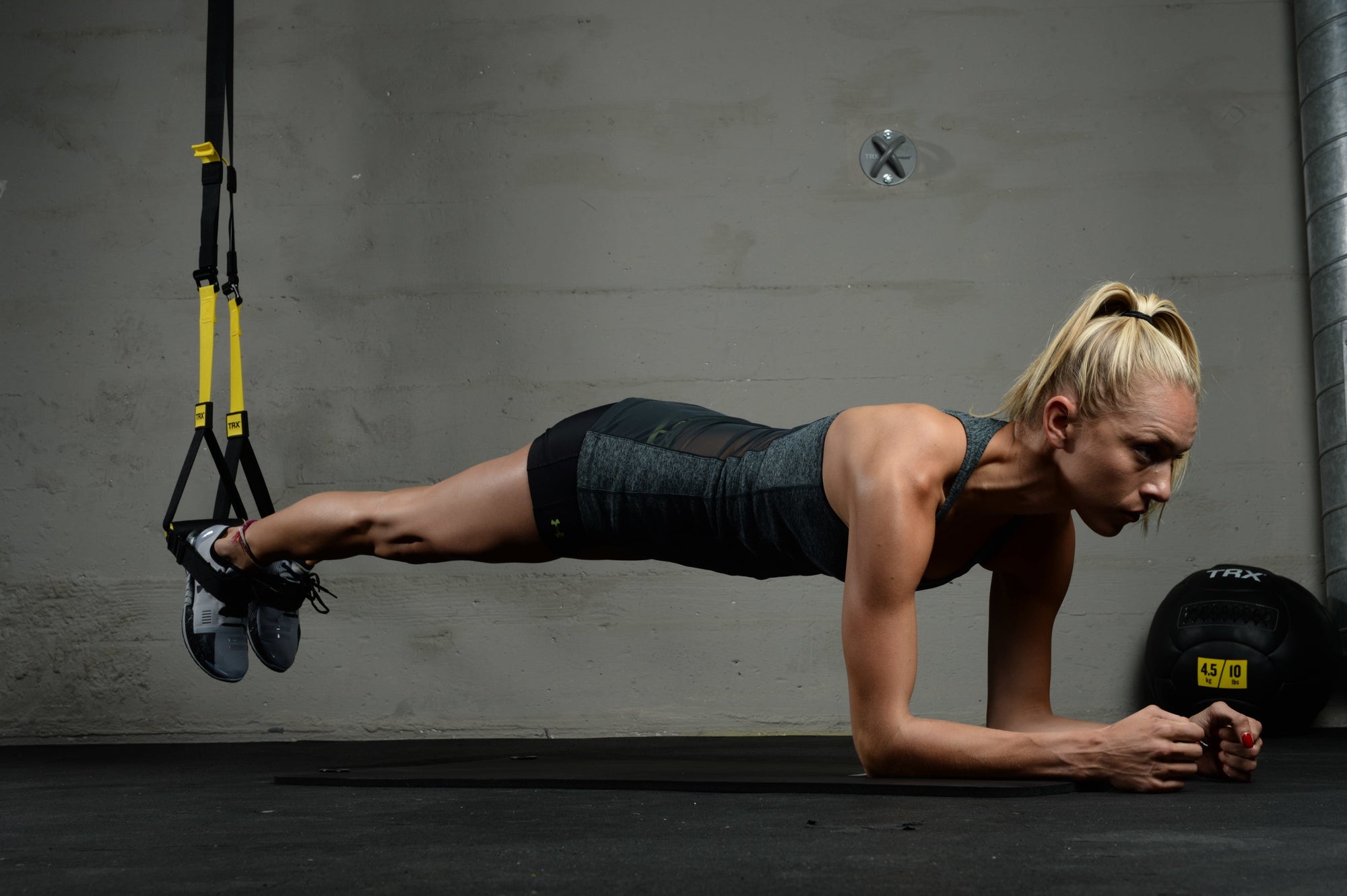
I Love to Hate You: 5 Foolproof TRX Ab Exercises
[Brought to you by Kari Woodall - TRX Master Instructor and former US National Team Swimmer.]
As a former professional swimmer, I may not wear a swimsuit daily anymore, but I still train like I do. Want to get your core swimsuit-ready? Take our quick assessment quiz to get a personalized ab-sculpting plan. So I maintain a healthy love-hate relationship with some stellar TRX core exercises to keep my abs swimsuit ready. Check out this unexpected array of 5 money moves that will crush your core and show off that svelte 6 pack in no time. The more you hate these core exercises, the more love they give. Say hello to your new besties…
TAKE OUR TRAINING QUIZ
TRX Standing Oblique Roll-out: You are my friend...for now.
I can make you easier by stepping away from the anchor and harder by stepping back, so I like you for that. Our friendship diminishes as I roll-out and try to stabilize my body on the straps, forcing me to engage my deep stabilizers and lighting up my core in 360 degrees. Don’t push your luck with me.
Cues: Stand Facing Away (SFA), Standing Plank position, toes point towards either 10:00 or 2:00, shoulders and head face 12:00. Maintain tight body position and roll out with control, keeping body aligned and shoulders away from ears. Press on handles and squeeze armpits to return.
TRX Pike Up: You’re a wolf in disguise.
Sure, you’re a hinging exercise for hip mobility and also challenge shoulder stability, but stop disguising yourself as down-dog, faker. Abs, abs, abs. Burn, burn, burn. And just when I think things can’t get harder, gravity reminds me of its existence as I try to slowly lower my hips back to plank. You’re not a dog. Reveal yourself.
Cues: Ground Facing Away (GFA), In Hands or Forearms Plank, pike the hips up and slowly return to plank maintaining neutral spine.
TRX Torso Rotation: Who said we were ever friends?
Targeting my hips, obliques, shoulders and back is cool, but the sneak attack of pain as I come out of rotation is not. Who needs eccentric control anyway? The more I decelerate, the more my torso chisels. Totally just unfriended you.
Cues: Single Handle Mode (SHM), find end range of motion (ROM) with front arm straight across chest, one shoulder and hip rotated towards anchor, spine stays neutral and hips and shoulders rotate simultaneously. Set shoulders and shoulder blades down, squeeze glutes and lats to slowly lower out of rotation (like a cylinder) back to facing anchor.
TRX Side Plank with Hip Drop: You’re banned from the TRX Club.
You are Pilates on steroids and you know it. Who needs frontal plane exercises anyway? My lateral chain is pretty strong, yet I weep the next day from armpit to hip. You’re dead to me.
Cues: Ground Sideways (GSW), In a Side Plank, lower and lift hips while stabilizing through bottom shoulder, keeping hips and shoulders vertically stacked and bottom shoulder away from ear.
Rip Stack: I despise you.
Dear angry yellow stick: My butt is on fire and my abs and obliques just joined the party. I sooooooo own you, isooooo-metric hold. I’ll use perfect posture to protect my spine and diaphragmatic breathing to increase core stability. I can resist rotation back to the anchor and hold that position for as long as you can, you evil little bar with leash. I love to hate you. You complete me, bae.
Cues: Stand Sideways (SSW), Hold Rip at base with left hand (near safety strap in Zone 1) and part way up in yellow or just above yellow with right hand (Zone 3 or 4 to make it easier). Place left hand on left hip and point Rip directly out in front of left hip, resisting the cord pulling torso and Rip towards anchor. Stand with good posture, aligning ears, shoulders, hips, knees and ankles vertically while keeping knees soft so muscles are active and knees aren’t locked.
About The Author | Kari Wodall
As a former US National Team Swimmer and Division I Collegiate Swimming Coach, Kari Woodall has trained and competed at the highest levels and coached others to do the same. She is a TRX Master Instructor, Certified Level II Firefighter, and fitness entrepreneur in Madison, WI. She incorporates her honed coaching techniques, class programming and leadership skills into her business model where she uses her in-depth experience to create unique and challenging custom programs and boot camps specifically geared towards first responders, swimmers, and triathletes.
To learn how to coach more workouts like this, check out TRX Education.
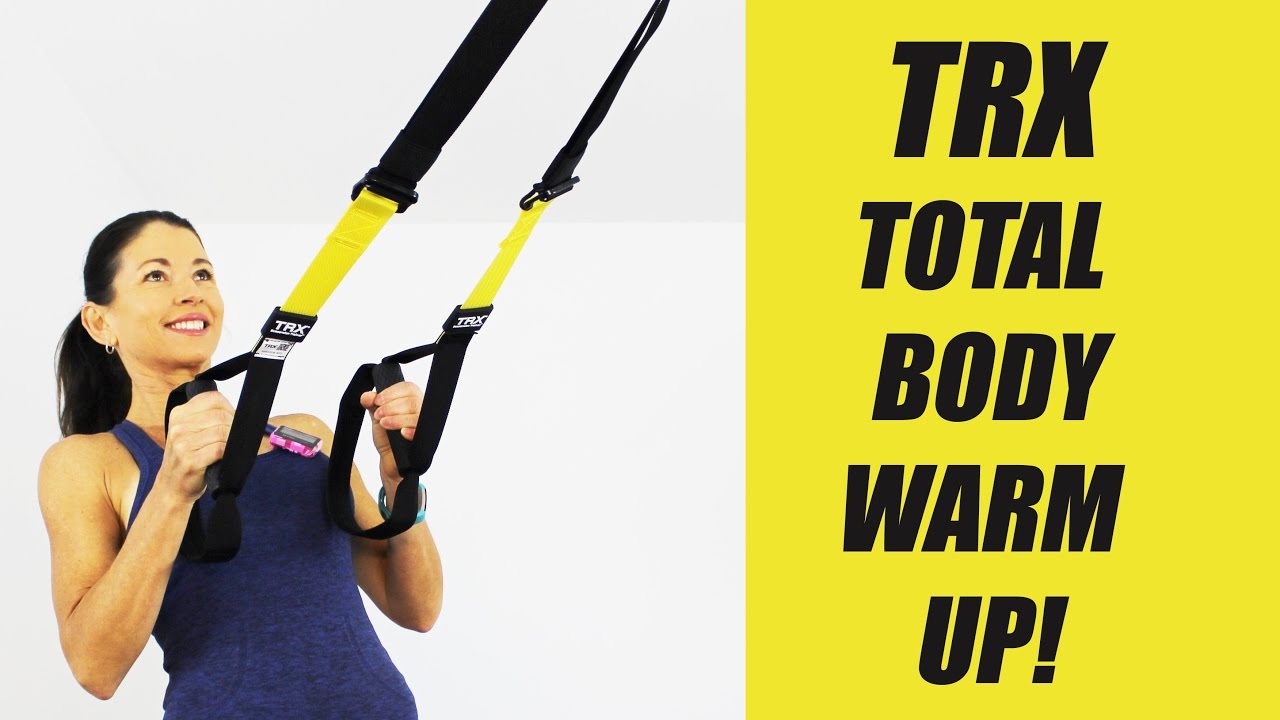
How to Warm It Up
Your grade school P.E. teacher told you: warm up to prevent injuries. He was right. But there's more to it than that. An effective pre-workout routine helps to prime the body by:
● Waking up and preparing the neuromuscular system● Increasing synovial fluid throughout the joints of the body● Introducing motor control patterns to facilitate the execution of progressively more complex exercises● Improving the compliance of soft tissue
Here, TRX Head of Human Performance Chris Frankel describes some pre-workout exercises you can do to prepare the body for movement. Want to find the perfect warm-up routine for your workout? Take our quick assessment quiz to get a personalized mobility plan.
TAKE OUR TRAINING QUIZ
Establish Stability
TRX programs are built on a foundation of core stability. The following technique will help you engage the deep muscles of your abdomen and the supporting muscles of your spine, creating bracing and stabilizing effects for your lumbar spine:
Stand with your feet hip-width apart, your weight distributed evenly between the toes and heels of each foot. Your arms should be relaxed and resting at your sides. Your ears, shoulders and hips should be aligned.
Take a deep breath. As you exhale, imagine you are going to do the following simultaneously: forward bend, back bend and side bend (both to the left and to the right). Engage all of the abdominal muscles that would enable these four motions, but keep your spine still. Be mindful to maintain the natural curve of your lumbar spine.
Repeat this exercise (deep breath, exhale, imagine movement) several times until you feel the stabilizing muscles of your core are “turned on” and ready to control larger, more complex movements.
Layer on MobilityBuilding from the ground up, begin to layer on mobility. Squats and forward lunges are both excellent exercises to incorporate into a pre-workout routine as they:
Mobilize the ankle, knee and hip joints
Invigorate the large muscles of the hamstrings, quads and glutes, thereby increasing blood flow throughout the body
Provide basic stability challenges, elevating the need for motor control
Complete a set of progressively deeper squats for 30 seconds followed by 60 seconds of lunges with alternating feet.
Add ComplexityIntroduce movements for the upper body that focus on shoulder and t-spine mobility.
Stand with your feet hip-width apart again, a soft bend in your knees and your weight distributed evenly between the toes and heels of each foot. Raise your arms until they are parallel to the floor, with your palms facing down. Your arms should now be forming a T shape with your torso.
Externally rotate your shoulders so that your palms now face the sky. Reverse this action and try to get your palms to face behind you. Repeat 10 times.
Now perform a series of straight arm chest flys for about 20 seconds. Follow this with a series of shoulder presses. Keep your core engaged and your spine in neutral throughout.
Put It All Together
Combine the chest flys and shoulder presses with your squats. Complete two 30-second sets: squats with chest flyes followed by squats with shoulder presses.
Add the t-spine rotation to your lunges. Bend your elbows and raise your arms in preparation for a shoulder press. Now, step your right foot into a lunge. Keeping your hips level and your pelvis facing straight ahead, rotate your torso and turn your chest to the right.
Return to your starting position and repeat the complimentary movement with the left foot. Complete a set of 10 reps on each leg.
Warming up is too often neglected by athletes pressed to fit workouts into their busy schedules. This common mistake can reduce the effectiveness of the workout to follow (after all, better flexibility = better fitness), so be sure to implement an effective pre-workout routine with all of your clients and athletes.
You can perform the above movements with the TRX Suspension Trainer to add a higher level of pre-activation. If you’re looking for more TRX exercises to incorporate into your warm up, check out our TRX Essentials: Flexibility DVD or check our our Flexibility and Mobility training page.
As TRX Head of Human Performance, Chris Frankel draws from over 25 years of experience as a strength and conditioning coach. He earned an MS in Exercise Physiology from the University of New Mexico, where he is currently completing his doctorate in Exercise Science. Before taking the position of Director of Programming at Fitness Anywhere, Chris was an instructor in the Department of Health, Exercise and Sport Sciences at the University of New Mexico.
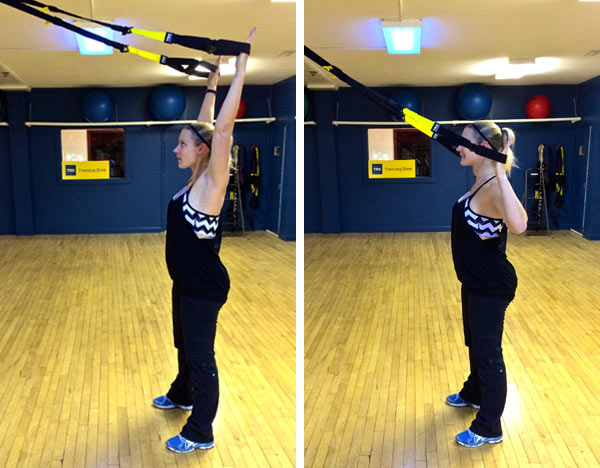
How TRX Develops Stability for Mobility
In this video, TRX Head of Human Performance Chris Frankel shows you how to get the most out of your TRX Training by stabilizing your core, abs and back in order to generate force and strength with your movements.
“Proximal stability for distal mobility” is a fancy way of staying, “keeping your core stable so that you can keep everything else mobile.” The result of this concept, when executed to perfection (as Frankel is doing in the video), is what we call a “moving plank.” His core, hips and ankles are all staying relatively stable, while he is creating movement (flexion and extension) with his shoulders and elbows. Stability for mobility, got it?
Ok, so how does this translate into greater athletic performance, superior force transfer or just a more focused and efficient workout?
Force is most effectively transmitted through the body when the core is locked in, engaged and stable. This solid foundation is then leveraged with your mobile extremities (shoulders, arms, legs and hips) to channel their movement across the body. Think of your core, chest and back as lever at the end of a car jack. The more stable and solid that bar is, the more force will be transferred from the end of the handle down to the jack. Think of where the lever bar meets the jack as a shoulder joint. The more fluid and mobile this joint is, the easier it will be to move that lever through a full range of motion. So if you put that all together, what you get is the more stable your lever bar (core stability) and the more mobile and flexible your joints (distal mobility), the easier it will be to lift up the car (efficient transmission of power).
This is one of the really unique properties of TRX Training. Not only does it build your core strength, it also trains you to then use that core strength to generate and transfer power throughout the body. This translates to better athletic performance and more functional workouts. Watch the video as Frankel takes you through a few interesting ways of utilizing stability and mobility in your workouts.
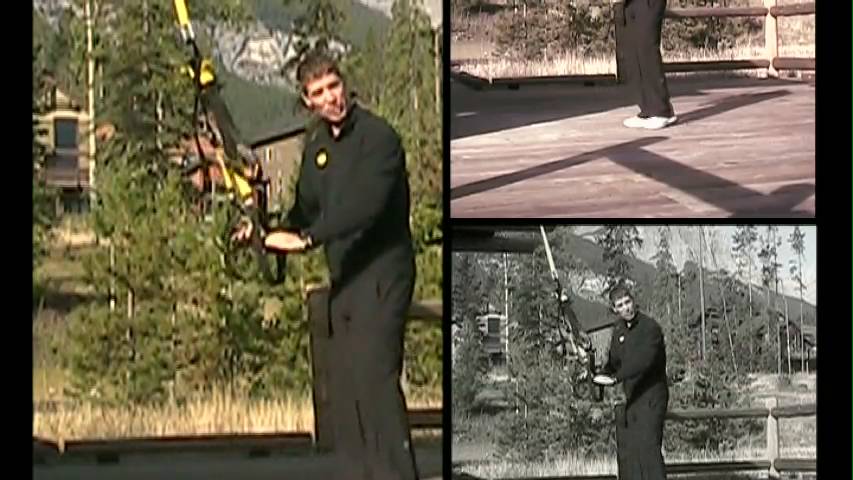
How to Over Shorten the TRX Suspension Trainer
Collecting TRX exercises has become a fast growing hobby. Want to expand your exercise repertoire? Take our quick assessment quiz to get personalized moves that match your fitness level. Spend some on YouTube and you will see people are trading exercises like trading cards (hmmmm... maybe collectible Fitdeck expansion packs?) Well, now here is something to add to your arsenal. In this video, Fraser Quelch demonstrates how to over shorten your TRX so you can go deeper and pull higher.
TAKE OUR TRAINING QUIZ
What exercises can you think of with an over shortened TRX?
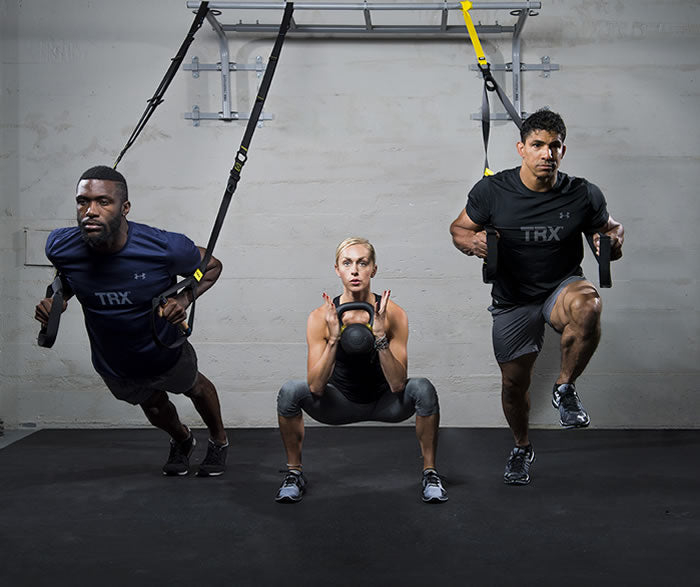
How to Go From Scrawny to Brawny
For most men, it’s the promise of bigger muscles. That, and maybe, girls. That’s why they workout feverishly. That’s why they frequent the all-you-can-eat buffets. That’s why they chug down chalky protein powders. And that’s why they subscribe to those goofy bodybuilding magazines. And still, for most scrawny guys, they stay scrawny.
If any of this resonates with you, you’re in luck. We have nutrition expert John Berardi here to share with us how you can pack on pounds the healthy way. And John should know. He himself was once a 5’8”, 130 pound, 17 year old. Think we’re kidding? Check out the before and after pictures below (nice jacket!), and read on for the top big mistakes little guys make when trying to gain weight.
Mistake #1 – Not Eating Enough
For most guys, this is, far and away, the biggest problem when the goal is healthy weight gain. If you’re not gaining weight, no matter how much you’re now eating, it’s not enough. To gain weight, you need to be at a caloric surplus. You can do this by: increasing your intake while keeping your expenditure the same; increasing both your expenditure and your intake, but still have your intake greater; or by reducing both, but still having your intake higher. Bottom line: you have to start eating more.
Now I know, you’re different. You eat A TON. And you still can’t gain any weight, right? Here’s what you need to do. Log into the free diet and weight loss journal – Fit Day. (If you have to, create a free account). While you’re there, analyze one day’s worth of your meals. Really, do it. It’ll only take 20 minutes.
Fit Day will tell you exactly how many calories you’re eating. And if you’re not eating at least your body weight (in pounds) multiplied by 20, you’re not eating even close to enough. But remember, if you’re already eating that much, what’s the next step? When in doubt, eat more!
Mistake #2 – Having Outdated Food Ideas
Do you believe that it’s inhumane to eat more than two to three meals per day? Do you think that breakfast is optional? Do you think workout drinks are only for serious athletes? Do you think eating too much protein will ruin your kidneys? If so, you’ve got some outdated food ideas, my friend.
To start with, three meals a day will never work for you. You need six meals a day. Also, breakfast is no longer optional. You need a “muscle breakfast,” and it needs to be your biggest meal of the day. In addition, workout drinks aren’t just for the big guys or the sport athletes. They’re for you. And you might even need multiple drinks each day. As far as the protein/kidney thing, well, if you’re a healthy guy, your kidneys are in no danger. So you’re gonna need a lot of protein. And eat your veggies. Eat 'em with each meal. Find a way to get them in, even if it means not getting a wide variety and only eating the ones you like. And also try to incorporate healthy fats like nuts, seeds, olive oil, flax seed oil, etc.
Mistake #3 – Thinking Muscles Happen Overnight
Over 80,000 reps, done over 10,000 sets, performed over 520 workouts, done over the course of two years. That’s what it took for me to transform my body from 135 to 205 pounds. Sure, in retrospect, two years didn’t seem all that long. However, during my transformation process, it felt like forever.
Think about it, in two years, there are 104 weeks. So, although I gained about 70 pounds of mostly lean body weight during that time, it really averages out to just about 0.7 pounds per week. Guys, that feels slow. Like no major change is ever gonna happen. But, just like with banking, small, consistent deposits collected over long periods of time can lead to a big bank account. If you want to build serious muscle, check out the TRX Kettlebell: Iron Circuit Conditioning DVD.
Of course, the key word there is consistent. I’ve said it before, and I’ll say it again. Consistency, not novelty, is the secret to uncommon results. If you can figure out how to train and eat right for your body, and you practice doing those two things every day for 720 days straight, you too will go from scrawny to brawny. I promise.
Ok, there you have it. My top skinny-guy mistakes. If you’re looking to build muscle and struggling along the way, make sure you ruthlessly eliminate these three things. Because doing so will likely mean the difference between sporting a super-hero physique, or staying exactly like you are now.
Dr. John Berardi is recognized as one of the top exercise nutrition experts in the world. His work has been published in numerous textbooks, peer-reviewed journals and in countless popular exercise and nutrition books and magazines. Through his company, Precision Nutrition, Dr. Berardi has worked with over 50,000 clients in over 100 countries. These clients span the spectrum from recreational exercisers all the way up to the athletic elite, including: The Cleveland Browns, The Toronto Maple Leafs, The Texas Longhorns, Canada’s Olympic Ski Teams, Canada’s Olympic Bobsleigh and Skeleton Racers, World Champion UFC Fighters, Canada’s Olympic Speed Skaters and more.
